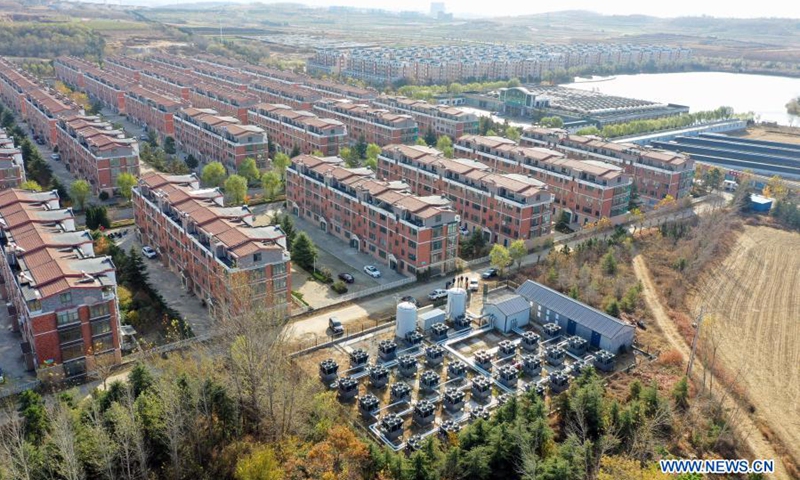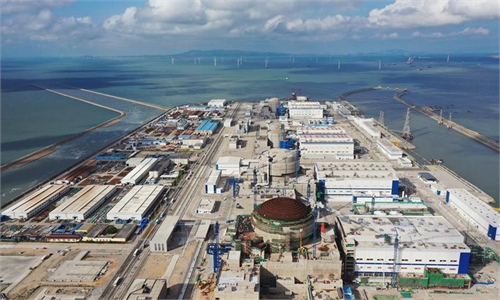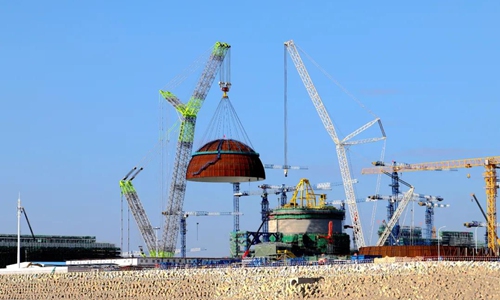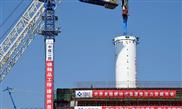
Aerial photo taken on Nov. 12, 2020 shows a heating station with clean energy at Wendeng district in Weihai, east China's Shandong Province. Shandong launched a campaign to promote a shift from coal to electricity for 358,400 households during its heating season in 2020, which will save 270,000 tonnes of standard coal and reduce emission of 680,000 tonnes of carbon dioxide in the heating season. (Xinhua/Zhu Zheng)
The second phase of the nuclear energy heating project in Haiyang city, East China's Shandong Province entered operation on Monday, an important breakthrough in China's nuclear energy heating strategy, with the city saying goodbye to coal-fired heating, showing that the country has ramped up efforts to promote clean energy residential heating.
The nuclear energy heating in Haiyang has taken the first step towards comprehensive utilization of China's nuclear energy development, which effectively improves the energy use efficiency, forming an important component of the country achieving its strategic goals of "carbon peak and carbon neutrality," one analyst said.
The nuclear energy heating project has become the world's largest cogeneration unit after the operation of the second phase of the heating project of 4.5 million square meters, which has replaced 12 local coal-fired water boilers and benefited 200,000 residents in Haiyang, making the city the first "zero carbon" residential heating city in China.
Experts said that the nuclear power plants extracts the high-pressure residual steam from the nuclear power unit as the heat source, and then carries out a multi-stage heat exchange through the station, finally transferring the heat to residential homes through the municipal heating pipeline network. During this process, only heat is transferred without any exchanged hot water, which ensures the safety and reliability of nuclear energy heating.
Liu Hua, an official from the International Atomic Energy Agency, said that Haiyang project has improved thermal usage efficiency and economy of nuclear power, expressing his hope to strengthen technical cooperation with China in comprehensive utilization of nuclear energy, as well as recommending China's successful experience to the international community.
At present, Haiyang's nuclear energy heating project is heating 30 million square meters of residential homes in the city. A senior official from the Energy Administration in Shandong said that the province will focus on building a 10-megawatt nuclear power base on the Jiaodong Peninsula and actively promote the comprehensive use of nuclear energy for heating and other purposes.
Global Times



